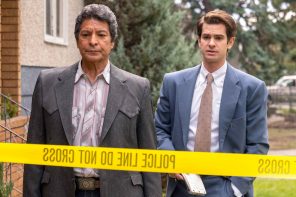While Romney-watchers feign shock in reaction to Mitt Romney’s People magazine confession that he once tried a cigarette and a beer (both forbidden according to the LDS Church’s dietary code, “The Word of Wisdom”), more substantial coverage this week is focusing on Romney’s service as bishop of his LDS congregation in Belmont, Massachusetts in the 1980s.
On Monday, the Washington Post offered a revealing account of Bishop Romney’s interactions with Boston’s robust Mormon feminist community during tense years for the movement, when the LDS Church played a significant role in the defeat of the Equal Rights Amendment and threatened Mormon feminists with excommunication.
It was the Salt Lake Tribune’s award-winning religion reporter Peggy Stack who first told the story in 2008 of Bishop Romney and his interactions with Boston-area Mormon feminists. (The New York Times’s Sheryl Stolberg followed Stack’s trail of sources for her solid piece on Romney as bishop last month.) The Post’s story adds nuance through in-depth interviews with Boston-area Mormon feminists including Pulitzer Prize-winning historian Laurel Thatcher Ulrich, scholar Claudia Bushman, and others, who offer a picture of Romney as a rules-oriented organization man who had a hard time connecting socially and demonstrated a lack of concern and empathy for women’s issues. But Romney’s outlook did mature over his years of service, according to the Post, and he may have assisted Boston-area Mormon feminists by deflecting Church headquarters’ inquiries into their activities.
On Tuesday, Salon.com’s Justin Elliot selected the most unflattering elements of Romney’s career as bishop to depict the GOP presidential candidate as “an enforcer of the most socially conservative policies of the LDS church.” Salon’s sensationalized story suggests that Mitt Romney was some kind of ecclesiastical Dirty Harry, especially on gender.
To put Romney’s record into perspective, it should be said that adhering to the LDS Church’s conservative positions on gender is nothing exceptional for a Mormon bishop. Like most clergy, bishops typically uphold the policies of the institution they serve. This, of course, does not excuse Romney’s egregious incidences of coldness and disrespect towards women as reported in Salon and elsewhere. But it’s wrong to depict Mitt Romney as some kind of hardliner, because as far as Mormon men of his generation go, on gender, Romney is rather moderate.
Given the scrutiny of Romney’s time as bishop, it also helps to understand more about the roles of bishops in LDS communities. There are about 28,000 LDS congregations worldwide, each with it’s own bishop (except for smaller congregations, called “branches,” which are headed by “branch presidents.”)
Bishops are unpaid lay clergy who serve three to five-year terms. Since all Mormon congregations are organized geographically—most have a few hundred members—bishops typically live in the wards where they serve. Bishops are always male and married; in addition to their church service, they hold regular jobs. Bishops are selected by higher-ranking local Church leaders through a process of discernment that does not include open participation by rank-and-file congregation members. Officials at LDS Church headquarters must approve candidates for bishop.
Responsibilities of the bishop include counseling, hearing confessions, and interviewing members to determine their worthiness for congregational responsibilities or participation in religious ordinances. Bishops assess socio-economic needs of local members and may offer material assistance to needy families. They also oversee membership records, finances, and building facilities. The bishop delegates to, directs, and receives input from other congregational leaders, male and female.
The Washington Post and Salon stories do highlight aspects of LDS congregational life that, while taken for granted by Mormons, may raise eyebrows among non-Mormon readers. Yes, members of an LDS congregation are expected to confess deeply personal matters to lay clergy who are effectively their neighbors and peers. (Mormon women who would prefer to confess to or counsel about deeply personal matters with female clergy have no institutional options.) Yes, the LDS Church hierarchy is entirely male. Yes, the Church has adopted openly anti-feminist positions on political matters like the Equal Rights Amendment. Yes, Church leaders have been known to levy intense personal pressure—including the threat of revoking one’s ability to participate in temple worship or even one’s membership—to discourage feminist (and LGBT-allied) activism.
As Romney continues his march to the nomination, readers deserve coverage of the candidate that moves beyond sensationalism and the entrenchment it engenders. It is important for readers to know that Romney developed his leadership style in a non-democratic, patriarchal, hierarchical church culture where he rarely encountered open challenge. And it is important to know that there are serious concerns about the status of women in the LDS Church. Those concerns merit progressive coverage that highlights a diversity of Mormon voices, as did the Washington Post when it took the time to talk to Boston’s still-vibrant Mormon feminist community.




